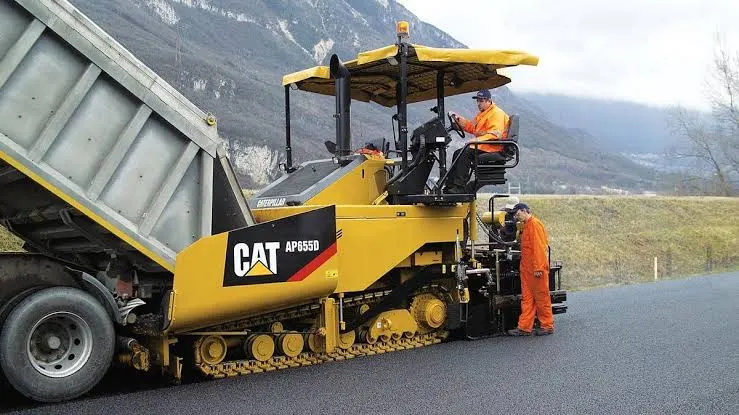Used equipment can be an excellent option for businesses and individuals looking to save money on their purchases. Whether it’s construction equipment, office furniture, or electronics, buying used can often provide significant cost savings compared to purchasing new. However, there are also potential risks and drawbacks when buying used equipment.
One of the main benefits of buying used equipment is the cost savings. Used items are typically priced lower than new items and can often be found at a fraction of the cost. This can be especially beneficial for businesses needing multiple items, as the savings can quickly add up. Additionally, buying used can be a more sustainable option, as it reduces the demand for new products and helps to keep items out of landfills.
However, it’s essential to carefully uate the condition of Used equipment before making a purchase, as there may be hidden costs associated with repairs or replacements.
Evaluating Used Equipment
Before buying secondhand stuff, check it well to see if it’s in good shape and fits your needs. This part will discuss important things to consider when checking out used equipment.
1. Define Your Needs
- Purpose: Make sure you know precisely why you need the equipment.
- Specifications: List the required specifications and features.
2. Research
- Market Price: Look at how much similar old and new equipment are selling for right now.
- Brands and Models: Identify reliable brands and models known for durability and performance.
- Reviews and Forums: Read reviews and join forums to gather user experiences and common issues.
3. Inspection Checklist
Physical Condition
- Exterior: Look for signs of wear and tear, dents, scratches, and rust.
- Components: Check all moving parts, seals, and joints for wear or damage.
- Age: Determine the age of the equipment. Older models may be more prone to breakdowns.
Operational Check
- Power Up: Turn on the equipment to ensure it powers up without issues.
- Functionality: Test all functions to ensure they work correctly.
- Noise and Vibration: Listen for unusual noises and feel for abnormal vibrations.
Maintenance History
- Records: Ask for maintenance records and logs.
- Repairs: Inquire about past repairs and part replacements.
- Usage: Determine how heavily the equipment was used. Lightly used equipment tends to be in better condition.
4. Documentation
- Ownership: Ensure the seller has legal ownership of the equipment.
- Manuals: Obtain any available user manuals and maintenance guides.
- Warranty: Check if there is any remaining warranty and if it is transferable.
5. Seller’s Reputation
- Credibility: Buy from reputable sellers or dealers.
- Reviews: Check the seller’s reviews and ratings.
- After-Sale Support: Ensure the seller provides support and service options.
6. Financial Considerations
- Price Comparison: Compare the asking price with market value and condition.
- Hidden Costs: Consider additional costs like shipping, installation, and future repairs.
- Financing: Look into financing options if necessary.
Inspection and Quality Assessment
Before buying used equipment, you must check it carefully to see if it is in good condition. Look for wear and tear, damage, or other problems that could affect how it works or how long it lasts.
To check the equipment well, list essential parts to look at. This list might include the outside inside parts, electrical systems, and more. Testing the equipment to ensure it works correctly and meets your needs is also a good idea.
Determining Market Value
When looking at used equipment, it is important to consider its market value. This will help you determine whether the price is fair and whether the equipment is worth buying.
To find out the market value, look at similar items sold recently in your area or online. This will show you what similar equipment is worth and help you agree on a fair price.
Warranty and Support Considerations
When buying used equipment, it is important to consider the warranty and support options. These will help protect your money and ensure you get help if there are any problems.
Look into the manufacturer’s policies and any third-party support options.
You might want an extended warranty or service contract for extra protection and support.
Sourcing and Purchasing
Finding trustworthy sellers is essential when buying used equipment. One way to find them is through online marketplaces and forums where sellers offer used equipment. Make sure to read reviews and check the seller’s reputation before buying.
Another option is to go to auctions or trade shows where sellers display their used equipment. This lets buyers look at the equipment in person and ask questions about its condition and history.
Negotiating Prices
Haggling over prices is a vital part of buying used equipment. Buyers should look up the equipment’s market value to ensure they pay a fair price.
Buyers should also try to negotiate other terms, like warranty, delivery, and payment options. It’s essential to be clear about what you expect and to write down any agreements.
Finalizing the Purchase
The buyer should complete the purchase after finding a reliable seller and agreeing on a reasonable price. Buyers need to check the sale terms and ensure all papers are correct.
Buyers should check the equipment before paying the total amount to see if it matches the agreement. If there are any problems, buyers should tell the seller before finishing the purchase.
By doing this, buyers can confidently buy used equipment for their business.

